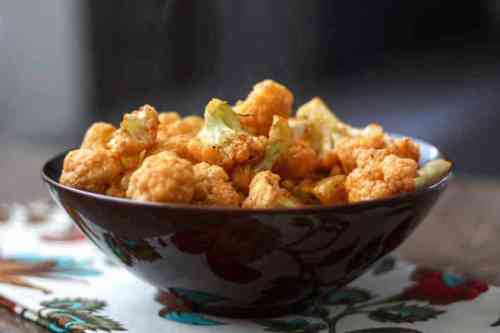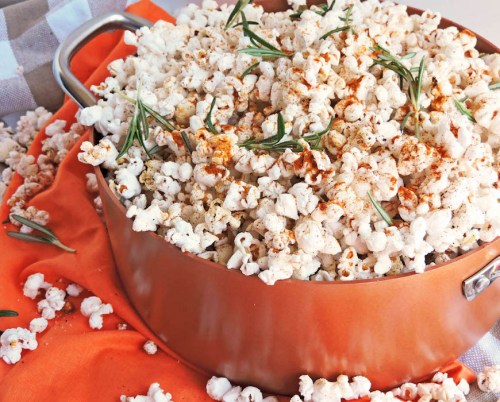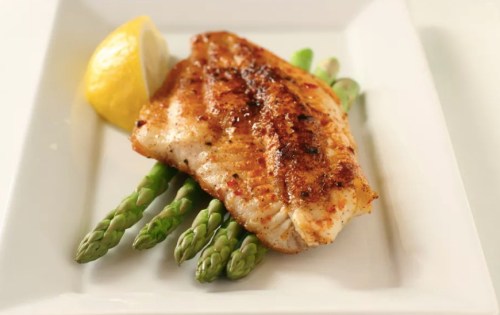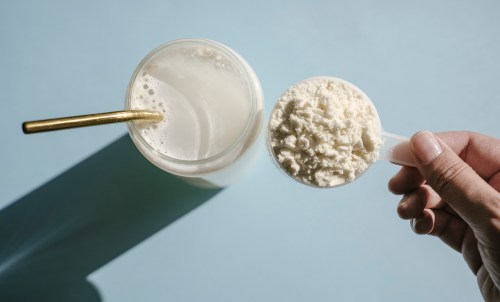You know that feeling of finding $5 in your jean pocket that you totally forgot was there? Get ready to experience déjà vu. Paprika is a pantry mainstay; you may already cook with it on a regular basis, but unlike other popular spices like turmeric, its benefits are largely overlooked. Discovering all the ways something you already have can improve your health is just like finding that forgotten Lincoln.
Paprika is a ground spice made from a specific, slightly sweet type of red peppers, capscium annum. Red peppers, bell peppers, and chili peppers also come from the capscium annum family, so paprika is a cousin of sorts—a cousin that’s equal parts fiery and sweet. Typically, it’s used in savory dishes, giving more flavor to proteins, veggies, soups, and stews.
Jessica Swift, RD, is certainly well acquainted with the spice. As a chef, she knows exactly the type of dishes it complements perfectly. And as a registered dietitian, she’s familiar with the paprika benefits that make it such a healthy addition to meals. Here, she explains the benefits of paprika and any side effects to be aware of. Plus, ideas for how you can incorporate the spice into more of your meals at home.
What are the health benefits of paprika?
1. it helps with digestion
One big benefit to incorporating paprika into your meals, according to Swift, is that it helps the digestive system more easily break down food. “Paprika contains capsicum, which is known for aiding in digestion by assisting in increasing gastric acid secretion that is vital for the breaking down of foods,” she says. The capsicum in paprika (which is also found in other spices like cayenne) has been linked to helping protect against ulcers and reducing gastroesophageal reflux disease (GERD) symptoms.
2. it’s anti-inflammatory
Not to encroach on turmeric’s territory, but Swift says that paprika has some pretty strong anti-inflammatory powers, too. According to the journal Inflammation, consuming paprika regularly can help reduce inflammation in the body. The capsicum in paprika also works to lower LDL cholesterol, the “bad” type of cholesterol that’s linked to inflammatory cardiovascular diseases and diabetes.
3. it could help you feel more energized
Paprika also contains iron, which helps carry oxygen throughout the body. “Without sufficient iron you may become very fatigued and can develop anemia, which can affect everything from immunity to brain function,” Swift says. If you don’t eat meat, it’s especially important to be conscious of your iron consumption and look for other ways to get enough. (One tablespoon of paprika has 1.4 milligrams of iron and you want to aim to get 17 milligrams a day.) “To better absorb the iron that you are consuming, eat with vitamin C-rich foods,” Swift says. “Fajitas made with paprika and bell peppers would be not only flavorful but would help with maximum absorption of iron.”
4. Paprika contains fiber
One tablespoon of paprika has a surprising two grams of fiber, part of the recommended 25 grams a day. This is another reason why adding it to your meals is good for your gut, as fiber helps move food through your system and feeds good bacteria in your gut.
Besides all of these benefits, paprika also contains small amounts of other nutrients including magnesium, calcium, potassium, and folate. While the amounts aren’t quite enough to turn to paprika specifically for these nutrients, they’re still nice little drops in their respective nutritional buckets.
In terms of risks and side effects to be aware of when consuming paprika, consuming too much could cause stomach irritation, sweating, and a runny nose; it is still part of the pepper family, after all. But in general, paprika is a safe spice to consume regularly.
Now that you’re schooled on all the benefits of paprika, keep reading for some ideas on how to cook with it at home.
7 recipes using paprika to try at home

1. GARLIC AND PAPRIKA ROASTED CAULIFLOWER
One of the easiest ways to cook with paprika is using it as a seasoning for roasted veggies. On its own, cauliflower tastes pretty neutral—that’s what makes it such a great chameleon, able to morph into so many other foods—but that also means it definitely needs some spicing up. Here, paprika and garlic are used to do just that.

2. SMOKED PAPRIKA CHICKEN
Using paprika as part of a spice blend for various proteins is another popular way to cook with it. For this recipe, all you need besides the chicken and paprika is salt, garlic, and olive oil. Even though the ingredients list is short, it will transform your meal.

3. PAPRIKA POTATOES
If you’re looking for a side dish, try these paprika potatoes. The secret to getting them *just* right is cooking them in a cup of chicken broth until they’re nice and tender, before incorporating the spices. Besides the potatoes, paprika, and chicken broth, all you need to follow this recipe is garlic cloves, olive oil, onion, salt, and pepper.

4. SPICY PAPRIKA, ROSEMARY, AND GARLIC STOVETOP POPCORN
Popcorn is a healthy snack on its own, but adding paprika to your bowl makes it even more nutritious—and it cuts down on the amount of salt you’ll want to use since there will be plenty of flavor without it. It’s amazing what a few shakes of a few key spices can do to make the snack even more satisfying.

5. SMOKED PAPRIKA VINAIGRETTE
One creative way to incorporate paprika into your meals more is to infuse it into a vinaigrette, which you can bottle and have on hand to drizzle on top of salads and other foods. This recipe shows how easy it is to make a paprika-infused vinaigrette, blending the spice with red wine vinegar, honey, stone-ground mustard, lime juice, and a few common pantry spices. Besides being used as a salad dressing, it can also be used as a dip for veggies or chicken and other proteins.

6. CHUNKY VEGETABLE SOUP WITH SMOKED PAPRIKA
What’s so great about a hearty vegetable soup is that you can incorporate whatever veggies you happen to have on hand into it; spring greens, summer squash, autumnal root veggies…they all taste great paired with paprika and vegetable broth. If you’re looking for a blueprint to follow, this recipe is it.

7. SPANISH PAPRIKA FISH
While using paprika to spice up chicken is pretty common, not many people think to use it when preparing fish, but this recipe is a total catch. Because paprika has such a strong flavor profile on its own, you don’t need to add much else. All this recipe calls for besides the paprika and fish (sea bream, salmon, or any solid white fish works best in this recipe) is olive oil, salt, flour (for breading the fish), garlic, lemon juice, parsley, white wine vinegar, and a bay leaf. Chances are, you already have the majority of what’s needed in your pantry and fridge.
As you can see, it really isn’t very complicated to cook with paprika, and it can be worked into pretty much any savory dish you’re cooking. With its digestive-boosting and anti-inflammatory benefits, incorporating it into your meals only comes with an upside, making your meal more robust in both taste and nutrition. Paprika may be common, but that certainly doesn’t mean it’s ordinary.
Sign Up for Our Daily Newsletter
Get all the latest in wellness, trends, food, fitness, beauty, and more delivered right to your inbox.
Got it, you've been added to our email list.











